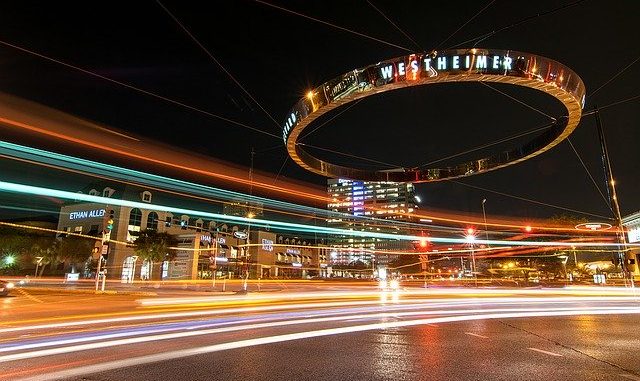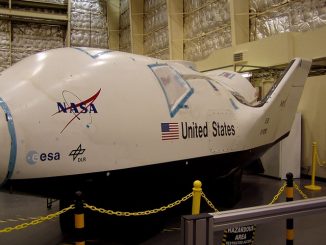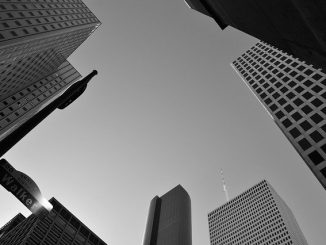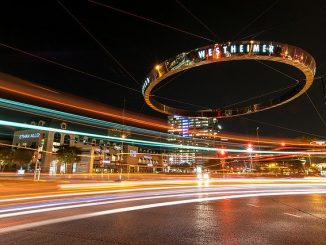
The major advantage to the blogosphere is that it takes the news and adds value. By allowing people with expertise in many fields to comment, a greater and more in-depth analysis can be done than by any news organization, no matter how large. Furthermore, such coverage and analysis, even if not unbiased, is often quite clear as to where it stands on any given issue. Contrasting that with the actions of certain news agencies that profess neutrality but slyly bias their reporting, it becomes clear why fewer people than ever before rely on the mainstream media for all their news.
The major disadvantage to the blogosphere is that it is heavily (though not totally) reliant on those very same news organizations for the core coverage to expand upon. When those agencies “fall down on the job”, they can take their blogosphere counterparts with them. And in a recent case, that may have happened.
While contributors and commenters here have been concentrating on the performance of Metro’s Danger Train and the exact routing of the University Corridor, Metro slipped under the radar and approved the route for the East End transit backbone, according to KTRH-740.
Metro spokeswoman Sandra Salazar says the panel unanimously selected Harrisburg Boulevard for a light rail line in the city’s east end. Salazar says work can proceed on preliminary engineering studies, and alignment work can be refined.
Most curiously, this one paragraph is almost the only mention of the story anywhere in the Houston online media today. I only knew to look for it because of a ten-second story on KHOU-11’s morning broadcast. Despite that, neither KHOU, nor most other local news outlets seem to have carried this decision. I finally found a more detailed report from Rad Sallee of the Houston Chronicle.
It was the first specific route to be designated since the Metro Solutions long-term transit plan began with the Red Line on Main Street. Scheduled to begin construction next July and open in December 2010, the line would begin operation with train-like buses on their own guideway and be converted to light rail if ridership increases enough.
Metro, in its press release, said:
Today, the METRO Board of Directors selected a preferred alignment to build guided rapid transit to serve Houston’s East End community. The Board voted unanimously in favor of Harrisburg on which to build the East End Corridor. This is the first in a series of Board actions on corridor alignments, with the East End Corridor one of five to be built as part of the METRO Solutions Phase 2 Implementation Plan.
The Board action paves the way for the project team to move fully into preliminary engineering to refine the alignment and identify station locations. Also included in the project’s next phase is environmental assessments. The 4 mile Harrisburg alignment would proceed from downtown Houston on Capitol Street, turning north at Bastrop onto Harrisburg, and continuing east on Harrisburg to the Magnolia Transit Center. Construction is expected to begin in July, 2007 and be completed by December, 2010.
There were three other alignment options the Board considered. They were a Hike-n-Bike Trail, the active Union Pacific right-of-way and Navigation. Each alignment option was evaluated in terms of potential ridership, estimated capital costs, community input, economic development opportunities, right-of-way impacts and other factors.
But what, exactly, is the East End getting? No one knows, because Metro hasn’t decided. From the Chronicle:
Many details, and some kinks, still must be worked out. For one, the board did not vote on how much the street will be widened or how many traffic lanes it will have after the guideway is built.
Three proposals under study would replace the current two lanes in each direction, plus a center turn lane, with one broad vehicle lane in each direction; two narrow vehicle lanes in each direction; or a trolley-like arrangement with lanes shared by the transit vehicles and cars.
In other words, they’re going to take one of the two major roads running into the East End, that currently has five lanes, and turn it into either a wider Main or narrower Fannin. Given Metro’s history of bait-and-switch, Rep. Beverly Woolley sounds awfully trusting.
Also sounding a positive note was state Rep. Beverly Woolley, whose Houston Armature Works occupies both sides of Harrisburg for a two-block span and needs access by 18-wheelers.
“I feel like our concerns are going to be addressed,” she said after hearing Ortega suggest that Metro might improve Texas Avenue, a block south of Harrisburg, to handle traffic displaced by the line or its construction.
“If they do everything they say, it will work out fine, but there are just so many unknowns,” Woolley said.
[Emphasis added. -ed.]
Why Metro is determined to replicate the Danger Train all over the city is a mystery, especially considering that only a block away is a right-of-way already owned by the city, which would remove the buses/trains from the streets.
The need for at least one overpass and maybe two – plus safety concerns and strong resistance from the community – torpedoed a proposed route along the Harrisburg Hike & Bike Trail. The narrow, green strip runs mostly between the backyards of houses north of Harrisburg.
I did not understand back then why the city created a trail on what was the most logical route for moving people from the East End to Downtown, unless it was a temporary feature, but there you have it: one of Mayor White’s barely-used bike trails takes priority over what will probably be a heavily traveled bus line. The reasons for scrapping this route are, beyond the basic NIMBY, absolutely ludicrous.
1. “It’s not safe to have rail behind the houses because kids will be drawn to it and accidents will happen.” How many accidents happened when it was an active rail line? For that matter, how many kids are killed each year on the UP line only two blocks away, which also runs behind houses and through residential neighborhoods? Hint: Don’t knock yourself out looking for mass carnage.
2. “There will have to be overpasses, right in our back yards!” So, Metro is willing to put a three-story-tall elevated train over expensive back yards along its proposed Richmond-Westpark hybrid alignments, but not over lower-valued yards in the East End. Well, you can’t say Metro is playing favorites with wealthy people, I suppose.
As for the United Pacific rail line, that was a non-starter, as UP uses that line heavily during the day, and line-sharing between light and heavy rail would be impractical.
I’m not a transportation expert by any means, but based on the same reasons I gave in this analysis, I strongly suspect that this line will quickly become the most heavily traveled, and Metro will quickly “have” to convert to rail. Of course, by spending the extra money to build the guided bus route first, they can say that growth exceeded their projections, and therefore claim that Metro is a success.
When it comes to making life difficult for bus riders, auto drivers, and even blind pedestrians, that is definitely true.
UPDATE (7-22-06): Anne pointed out several earlier articles that I missed during my inital sweep, including one she posted here at BlogHOUSTON. I may have left the impression that there was no earlier coverage, but I was specifically referring to Friday. I knew that there had been some coverage during the run-up, but there was far less (and little discussion) compared to the University Line. That garnered far more coverage than the East End route. Moreover, the late release of the UL alternatives mean that no media had a chance to point out that the rationales given for one route contradict the plans on the other, re: elevated track.
Chicken-or-egg time: Is the lack of coverage due to lack of strong opposition, or is the lack of strong opposition due to lack of coverage? Or is it due to the East End’s inability to raise lots of money and hire lawyers?
Additional articles:
Bizjournal and the <a href="http://www.chron.com/disp/story.mpl/met



